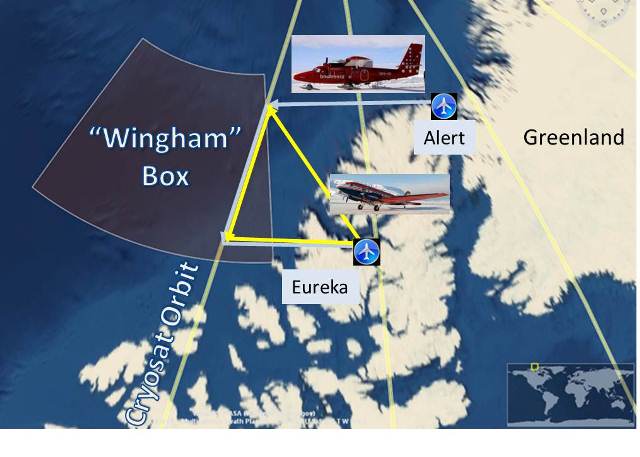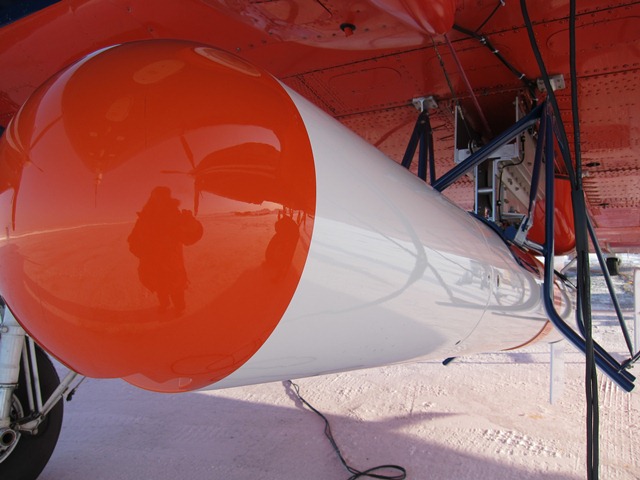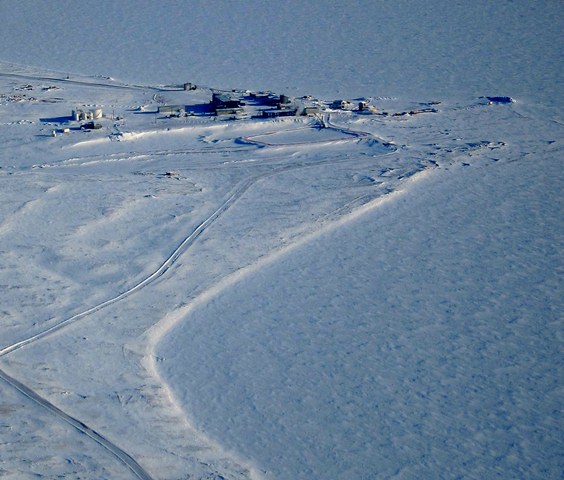From Malcolm (ESA), Eureka, Canada, 4 April
Thursday, 4 April was a special day for us all for a number of reasons. A big highlight was that after many hours of painstaking testing – Christian Haas and his team were able to repair the EM-bird. The bird is a crucial instrument to the success of the campaign as it provides the all-important ice-thickness measurements.
The ‘bird’ is a remarkable instrument. Shaped like a torpedo, it is actually lowered close to the ice surface in flight using a winch. It then hangs by a cable from the Polar-5 plane, suspended above the sea ice throughout the entire flight.
For the Polar-5 pilots, flying very low close to the sea ice is both challenging and tiring, but worthwhile for the precious measurements the bird provides.
Another reason is that the flights on this day are the last direct underflights of CryoSat over sea ice for this year’s campaign. Even more interestingly, they represent the only flights inside the aptly named ‘Wingham Box’, after Duncan Wingham, a British scientist who originally proposed the CryoSat mission to ESA.
Unlike the rest of the Arctic Ocean, the CryoSat satellite makes interferometric measurements when crossing this box. The purpose of this rather remarkable experiment is to help scientists determine whether ‘ interferometry’ might represent the key to even better maps of the changes in sea-ice thickness, perhaps even providing completely new information on sea-ice conditions below.
While there is still a lot of work to be done in understanding CryoSat interferometric sea-ice data, today’s flights will no doubt help verify the potential of this exciting new mode.
Lastly, after almost seven days on site it was time to say good-bye to Alert, our operations base for the last week.
After a final look around the base, we quickly finished packing, headed out to the air field and climbed into the Polar-5 and Twin-Otter planes. Despite some tricky wind and weather conditions the experiment was successful.
Both planes reached the upper right corner of the flight pattern far off the coast and flew down the CryoSat orbit of the day and then headed safely (always important) back towards land reaching the isolated Canadian weather station Eureka by about 16:00 local time. The flight itself was one of the longest so far, well over five hours for the Twin Otter – so everyone was glad to get there in time for supper and a celebratory drink!
Arriving, I was rather curious about the temperature at Eureka as it has the reputation of being one of the coldest places in Canada. It did not disappoint! As we arrived the station manager cheerily announced that it was –36° C – the coldest temperature recorded so far during this Arctic campaign.














Discussion: no comments